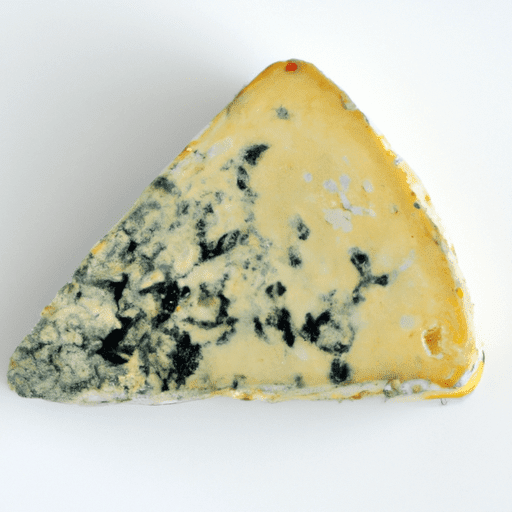The Ecstasy of Stilton Cheese: A Royal Blue Delight
Stilton cheese stands proudly among the most revered and cherished varieties of cheese in the world. With its distinctive flavors and luxurious texture, it has captured the hearts of cheese connoisseurs and food enthusiasts alike. Today, we embark on a culinary journey to uncover the secrets behind this beloved blue cheese.
Taste and Texture
Stilton cheese is renowned for its bold, full-bodied flavors, which are complex and multifaceted. Its taste can be described as rich, creamy, and slightly tangy, with a pleasant nuttiness that lingers on the palate. The cheese’s firm yet creamy texture is accompanied by beautiful blue veins effortlessly spreading through its rich ivory-colored interior.
Cooking with Stilton Cheese
Stilton cheese’s versatility in cooking is truly remarkable. Its unique characteristics make it a flexible ingredient that can effortlessly enhance a variety of dishes. Here are a few popular ways to incorporate this delectable cheese into your culinary endeavors:
1. Cheese Boards and Pairings
When served on a cheese board, Stilton adds a touch of elegance and sophistication. Pair it with fresh apples, pears, or figs for a delightful balance of flavors and textures. Accompany this with a glass of port or a robust red wine to elevate the taste experience.
2. Indulgent Sauces and Dressings
Stilton cheese brings its distinctiveness to sauces and dressings, providing a depth of flavor. Consider adding crumbled Stilton to a creamy salad dressing, or melt it into a luscious sauce to elevate your steaks, burgers, or roasted vegetables to a new level.
3. Irresistible Soups and Quiches
Add a touch of sophistication to classic soups and quiches by incorporating Stilton. The cheese’s creamy texture melts beautifully into a velvety soup or blends splendidly with eggs in quiches, creating a truly sumptuous dish that will leave your taste buds dancing with joy.
Nutritional Value
While Stilton cheese is undeniably indulgent, it also offers some nutritional benefits. This cheese contains essential nutrients such as calcium, protein, and vitamin B12. It can bring vital minerals into your diet and provide a good source of energy. Moderation, of course, is key, as it is with most flavorful foods.
An Enchanting Rendezvous through History
The captivating history of Stilton cheese dates back to the early 18th century. This remarkable cheese originated in the village of Stilton, Cambridgeshire, where it was carefully crafted by skilled artisans. Furthermore, it was the only British cheese that could legally bear the name of a place where it wasn’t made, as it was commonly sold at the Bell Inn in Stilton.
Fun Facts about Stilton Cheese
- Stilton is one of the few British cheeses granted the status of a “protected designation of origin” (PDO), ensuring its authenticity in terms of production, flavor profile, and quality.
- Traditionally, Stilton was made using raw milk; however, due to modern safety regulations, most Stilton today is made from pasteurized milk.
- The cheese wheels are handcrafted, allowing the flavors to develop and mature naturally over a period of several months, resulting in the remarkable taste and texture we adore.
Stilton cheese remains an enchanting delight that continues to captivate cheese lovers from all corners of the globe. Its distinctive taste, versatility in cooking, and fascinating history make it a true treasure in the culinary world. So why not embark on your own Stilton adventure and savor the ecstasy of this royal blue cheese?
Stilton Cheese
Origin: Stilton cheese is a traditional English cheese that is named after the village of Stilton in Leicestershire, England. It is believed to have originated in the early 18th century.
Production: Stilton cheese is made from cow’s milk using pasteurized whole milk. It is a blue cheese, characterized by its veins of blue mold that develop during the aging process.
Cheese Classification: Stilton cheese falls into the category of blue-veined cheese. It is made using a specific set of manufacturing and aging techniques, which include piercing the cheese to encourage the growth of blue mold.
Flavor and Texture: Stilton cheese has a crumbly and creamy texture with a complex flavor profile. It is known for its rich and tangy taste, which becomes more pronounced as the cheese ages.
Certification: Stilton cheese is a protected designation of origin (PDO) product in the European Union. This means that it must be made in the designated counties of Derbyshire, Leicestershire, and Nottinghamshire according to specific production methods.
Common Uses: Stilton cheese is often enjoyed on its own, served on cheese boards, or in salads. It is also commonly used in recipes for sauces, tarts, soups, and even desserts. It pairs well with fruits, nuts, crackers, and bread.
Nutritional Benefits: Stilton cheese is a good source of protein and calcium. It also contains vitamins A, B, and D, along with minerals such as zinc and phosphorus. However, it is important to consume it in moderation due to its high fat and sodium content.
Historical Significance: Stilton cheese has a long history and has been enjoyed by many notable figures throughout the years. It was even mentioned by famous authors such as Charles Dickens and Jane Austen in their writings.
Unique Properties: Stilton cheese is known for its distinctive blue veins, which are a result of the added Penicillium roqueforti mold during production. The mold grows from within the cheese and gives it a unique appearance and flavor. Additionally, Stilton is traditionally made using animal rennet, but vegetarian versions are also available.




Use the share button below if you liked it.
It makes me smile, when I see it.